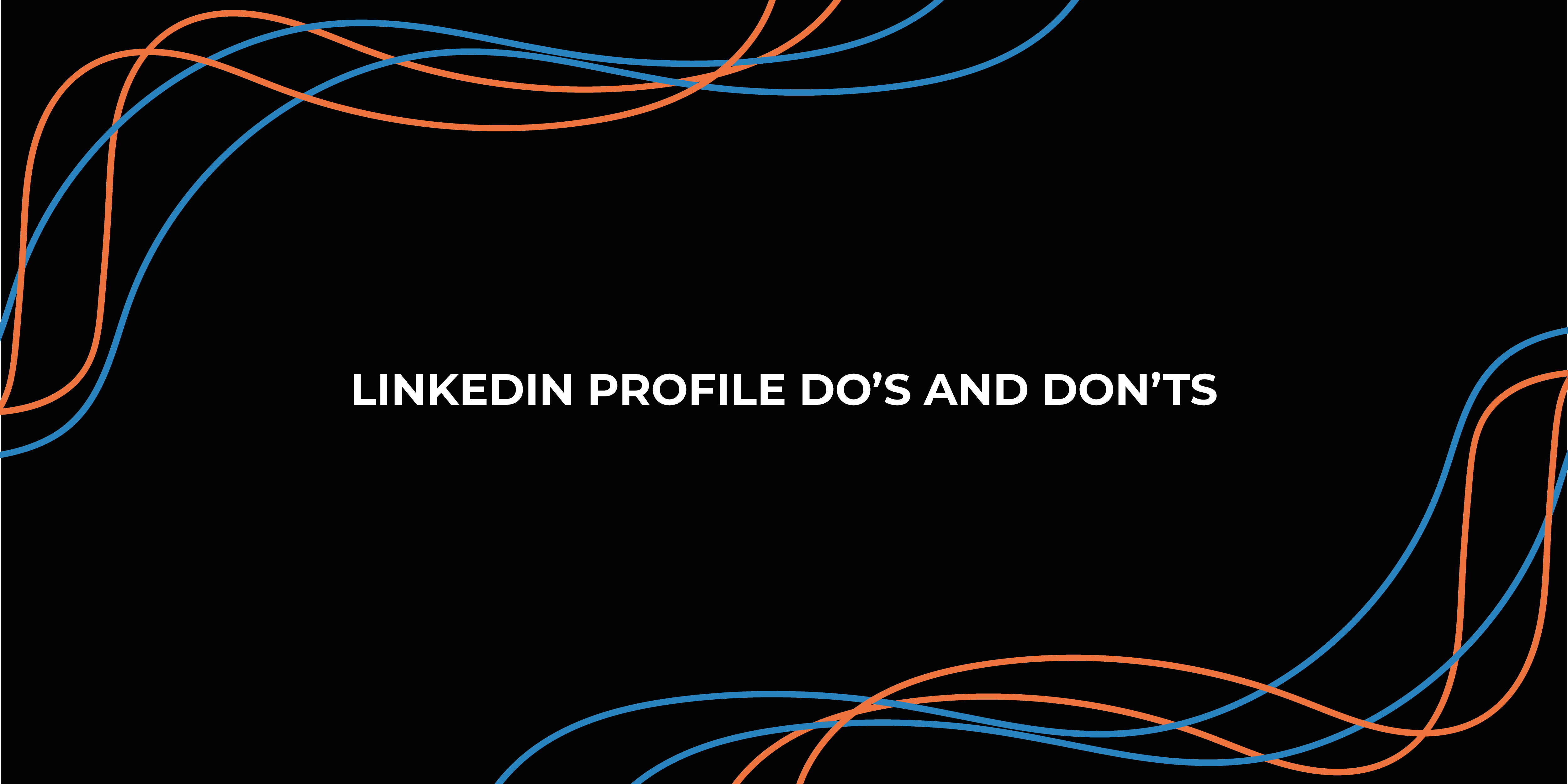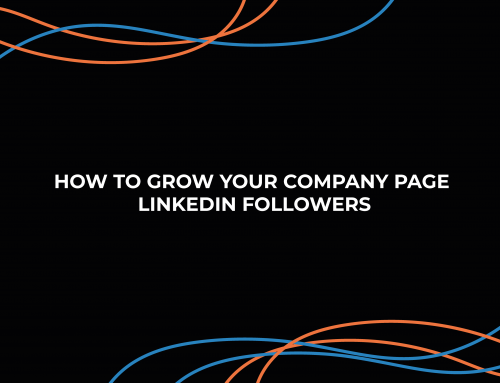A LinkedIn profile is a must if you are a business professional.
LinkedIn is a social media platform for professionals and B2B businesses. It provides a space for making connections, expanding networks, building personal brands, and generating sales opportunities. If you’re new to LinkedIn or have just begun exploring its potential, you might be unsure where to begin. Well, it starts with your profile.
Imagine your LinkedIn profile as an online business card. It’s a chance to convey your expertise, accomplishments, and aspirations in a visually appealing and concise manner. Just like a well-designed business card, your LinkedIn profile should leave a positive and memorable impression on anyone who visits it. But there are some common mistakes people make when creating their profiles, so there are some basic things to remember and good practices to follow when making your LinkedIn profile.
So, whether you are looking for a new job, want to establish yourself as a thought leader, or just want to grow your network, there are some simple rules to keep in mind.
The Do’s
Set up a complete profile
This is a critical first step. Far too many profiles on LinkedIn are either out of date or incomplete. This leaves an incomplete picture of your professional journey and skills, potentially causing you to miss out on valuable networking and career prospects.
For newcomers to LinkedIn, it is important to fill out all the different sections on your personal profile – including your work experience, education, skills, summary, and a professional profile photo. This paints a clear and compelling picture of who you are professionally, making it easier for others to connect with you and for potential opportunities to come your way.
If you’ve been on LinkedIn for a while, it may be a good idea to look things over. Perhaps you’ve started a new job or secured a promotion, received new qualifications, or expanded your skill set. It is generally recommended to review your profile periodically and ensure you keep up with any changes in your professional life.
So, remember, if you are to stand out from the competition and present yourself in the best possible way, your profile needs to be up-to-date with accurate information, and all the different sections need to be complete. A complete profile showcases your commitment to professional growth and engagement.
Use a great profile picture and banner
When selecting a profile photo, go for a smiling, engaging, up-to-date headshot that exudes warmth and approachability. It doesn’t necessarily need to be a picture taken by a professional photographer; nowadays, your smartphone camera is more than capable of capturing a great shot. However, if you are going to take a picture of yourself, there are some general tips for getting the perfect profile picture:
- Background: Choose a simple and clean background.
- Lighting: Natural light is great. Make sure your face is well-lit, and there are no harsh shadows.
- Face Visibility: Make sure your whole face is clear and in focus.
- Attire: While you don’t necessarily have to dress in a suit and tie, it is best to dress professionally. Go for a solid-coloured top that goes nicely with your skin tone. This helps keep attention on your face.
- Smile: You’re posing for a picture, not a mugshot. Don’t be afraid to crack a smile. It makes you appear friendly and approachable.
With regard to the banner image, you have a little more creative freedom. The banner image is an opportunity to showcase your individuality and professional style. If you’re representing a company or brand, consider using your logo or a banner related to your field. If you’re in a creative field, displaying examples of your work can be a powerful way to demonstrate your skills and expertise. Placing your contact information in the banner can be convenient for those who want to connect outside of LinkedIn, or if you have received positive feedback or testimonials, showcasing them here can enhance your credibility.
In terms of dimensions, keep in mind that your LinkedIn profile picture should be around 400 x 400 pixels, while the banner photo is best at approximately 1584 x 396 pixels.
It is also important to make sure that the colours and overall style of the banner complement your profile picture. The goal is to create a cohesive and visually appealing impression that reflects your personal brand.
Your profile needs to be detailed
Your profile serves as a narrative of your professional life. Your work history is not merely a list of positions; it’s an opportunity to showcase your expertise and tell your story. For each position you’ve had, go into the specific details, highlighting key accomplishments, outcomes, and skills acquired.
Don’t shy away from showcasing your accomplishments. For example, you could describe how you led a successful project that increased revenue by 20%, demonstrating your strategic planning and leadership abilities; or perhaps you could share how you revamped a customer service process that led to a significant improvement in client satisfaction, underscoring your problem-solving and customer-focused skills. You present a compelling story of your career journey by going into detail, making it easier for potential employers, clients, and collaborators to recognise your strengths and contributions.
It is important, however, to try and make this information engaging and compelling. A mere rundown of your career history and professional accomplishments is not particularly inspiring. You do not want visitors to your profile to move on quickly; instead, you want them to actively interact with your profile and establish a genuine connection. For example, if you have a good sense of humour, don’t be afraid to show it. If you are a creative person or trying to position yourself as a thought leader, try to enhance your profile to make it more captivating. In the end, the goal is to create an enjoyable experience that encourages people to interact with your profile and connect on a deeper level.
Customise your headline
The headline section is the most searched part of LinkedIn, and aside from your profile picture and banner image, it is the first thing people see when they click on your profile. LinkedIn will create a default one, simply listing your current job title. However, you can personalise this. You can create a more engaging headline, and by using strategic keywords in your headline, you will appear in more LinkedIn searches. You may include words and phrases that reflect your skills and expertise, highlighting your unique value proposition. You may include words related to your business or specific industry, such as “innovative marketing strategies,” “data-driven decision maker,” “financial industry expert,” or “entrepreneurial visionary.”
Your headline is an excellent opportunity to showcase your professional brand and make a strong first impression. It’s not just about being engaging; it’s also about making sure people can easily find your profile.
Get some recommendations
A LinkedIn recommendation is a personalised written description by a fellow member endorsing your professional capabilities and skills. This can include anything from strong communication and writing skills to problem-solving, project management, and adeptness in nurturing customer relationships.
These recommendations carry a lot of weight as they draw considerable attention when people look through your profile. These references inform the people you are good at your job. If you are searching for a new job, it demonstrates your skill set and makes you more appealing to potential employers. If you are trying to establish yourself as a thought leader, these recommendations demonstrate that you are worth listening to.
You can easily request recommendations from your first-degree connections. Once a connection writes you a recommendation, LinkedIn will notify you through a message from the sender. So, why wait? Start the ball rolling and begin seeking recommendations now.
The Don’ts
Don’t just talk about your job
Your profile should be about you, not your employer. Regardless of your position, even if you are fortunate enough to be the company’s CEO, the spotlight should be on you. For instance, shine a light on your personal wins and growth, not just your company’s trophies. And if you mention the company’s achievements, emphasise your role in making those wins happen. Try to emphasise the concrete outcomes and measurable results you’ve driven in your roles. Quantifiable metrics, transformative changes, and milestones reached – numbers talk.
Now, let’s talk about your “about” section. This is your space to connect with those who visit your profile. Achieve this by writing a personalised “about” section that talks about you and may include what you do for the employer, but this needs to be focused on who you are. Share your passions, motivations, and the driving force behind your professional journey. Paint a picture of your values, interests, and the unique perspective you bring to the table. This can make your profile more appealing and relatable, encouraging others to connect with you.
Do not be inactive on LinkedIn
The more you engage on LinkedIn, the better you’ll fare with its algorithm. It’s important to distinguish between posting, commenting, and liking – posting involves creating original content, posing queries to your network, conducting polls, or sharing valuable articles. This sets you apart from simply reacting to others’ posts.
Thankfully, on LinkedIn, you have many options for publishing content: articles, newsletters, videos, infographics, images, industry insights, personal anecdotes, and more. These let you showcase your expertise and encourage others to connect with you to learn more.
You can also let your personality shine through – if humour is your forte, go ahead and share a funny post. Remember, however, it’s a good idea to keep your posts related to the world of work or your specific industry. The focus should always be on providing value to your audience.
Remember, engaging with your audience is just as important as posting. Respond to comments and interact with those who’ve shown interest. It’s not only polite but also helps you build connections and relationships with others in your network.
Do not have only a few connections
Your presence on LinkedIn is directly influenced by the number of connections you have. The greater your connections, the higher your visibility on the platform. Those with fewer than 75 connections are at a significant disadvantage. Your goal should be to build a network for at least 200-300 connections. This should include friends from school or university, present and former colleagues, bosses, and potentially recruiters if you’re in job-search mode.
It’s important, however, to remember that this isn’t an invitation to connect with everyone indiscriminately. You should prioritise those with whom you have things in common – connect with people who share common interests or skills. This approach isn’t just about expanding your network; it also offers the potential to learn, build relationships, and even uncover business prospects.
Conclusion
To sum up, perfecting your LinkedIn profile is about finding the right balance between what to do and what to avoid, resulting in a more appealing and effective online presence.
LinkedIn offers a distinct platform for professionals to connect, learn, and showcase their skills to a wider audience. By following these positive practices and steering clear of the negative ones, you can refine your LinkedIn profile, maximising its potential to connect, engage, and propel your professional journey forward.





